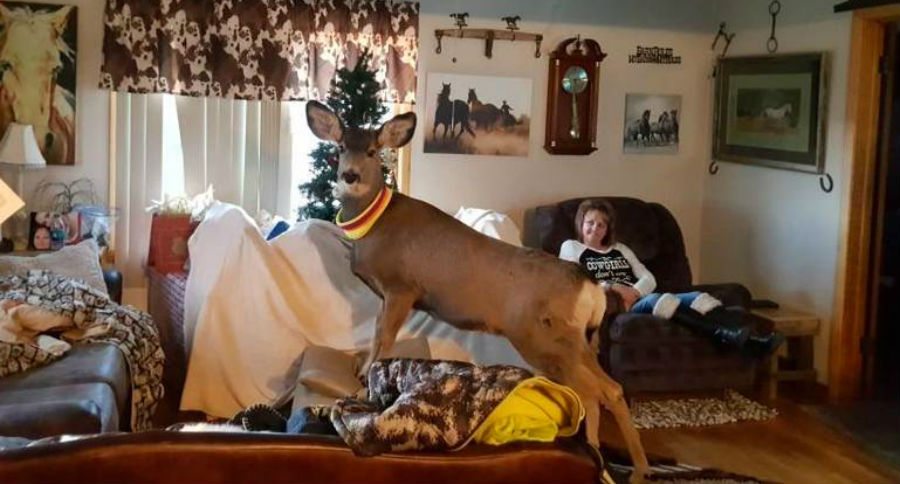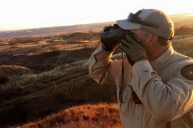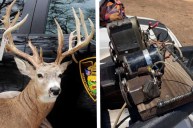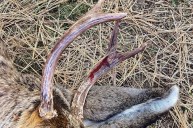The Kansas Department of Wildlife is re-evaluating its policy on euthanizing wildlife after a game warden shot a pet deer in front of a family.
Kansas Department of Wildlife officials say they want to improve their euthanization policy concerning wild game animals that have been in close contact with humans. This, after game wardens shot a pet deer on December 19th in full view of the family that took care of it.
The mule deer was "adopted" by Kim Mcgaughey for around 22 months before it was shot by wardens in Mcgaughey's driveway. Family members were present and videotaped the situation, which has received quite a lot of media coverage. The shooting has sparked outrage over the seeming insensitivity of the Kansas Department of Wildlife's actions.
You can read the entire backstory of the incident here.
However, Mark Rankin, assistant director with Wildlife and Parks law enforcement, said the three game wardens involved acted within the law, and that they were ill equipped to transport the deer to another location before shooting it. He said that the situation would have been too dangerous for the wardens as they had only small catch poles, the size used to secure animals the size of a raccoon.
Hutchinson Zoo director Ryan VanZant also said "Even though a deer's been raised by humans, they still have the potential to be really dangerous. They're nice until they're not, and if they feel threatened, nature takes over. A big kick to the throat or something will kill you real fast."
Additionally, VanZant said that the zoo "absolutely would not have taken that animal" because of disease concerns.
Robin Jennison, Kansas Department of Wildlife, Parks and Tourism secretary said:
"Clearly things could have been handled much better in the field. It was a bad deal, and our agency has a responsibility to learn from it. We need to get some clear policies in place to help our officers in the field."
Jennison indicated that he still had questions that needed answering.
"I'm not even sure where such decision was made, if it was just the game warden or if it was further up the command structure," he wondered. "We need to have clear-cut guidance and better involve the command structure, if it's not already involved. We also need to make sure our guys in the field make decisions that are in tune with public perception."
It is illegal for private citizens to keep wildlife, and the options for dealing with such situations are limited. In almost all cases where the animal is not injured and could be transferred to a rehabilitation center it will probably be put down by officials in the field.
However, public perception is important and this situation certainly could have been handled better, which Jennison admits and is trying to rectify should it ever occur again.
On a personal note, we had something strikingly similar occur with my family at our cottage in northern Wisconsin several years ago. A whitetail fawn had decided that our and the neighboring yards were going to be its home, and my young daughters sort of adopted the deer. The animal would allow them to pet and hug it, and it followed them everywhere.
Someone reported a "pet deer" to the local DNR and one day a game warden came, found the deer in a neighbor's front yard, and dispatched it in full view of everyone. It was a bit traumatic, to say the least. Everyone was rightfully upset that the warden didn't give any warning and wasn't more discreet about it. It was a bad deal, and gave the DNR a black-eye to those who witnessed it.
So, I understand the distress that the Mcgaughey's must have felt at seeing "their" deer put down with such seeming insensitivity. But I also understand the warden's position in dealing with such situations.
I would suggest that when wardens are forced to address situations of this nature that they come prepared. Suggesting that all they had were small catch poles in unacceptable - come prepared! Be prepared, both physically and mentally to deal with the situation.
Be prepared to remove the animal to a less conspicuous spot if at all possible, and to let people know what is about to happen so that they too can prepare or remove children who may be emotionally attached to the animal.
Public perception is important and some thoughtfulness can go a long way.
Like what you see here? You can read more great articles by David Smith at his facebook page, Stumpjack Outdoors.
https://rumble.com/embed/u7gve.v3tr93/
NEXT: Mule Deer Buck Rescued After Epic Struggle in Frozen Colorado River




